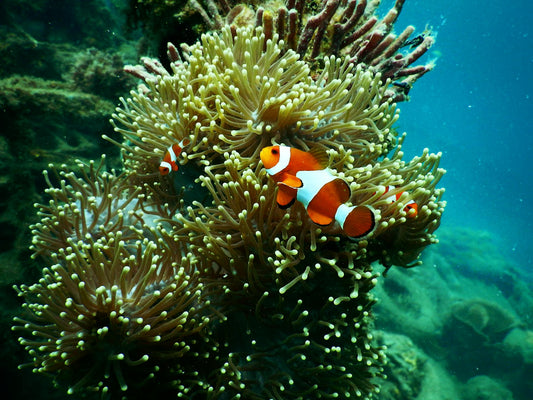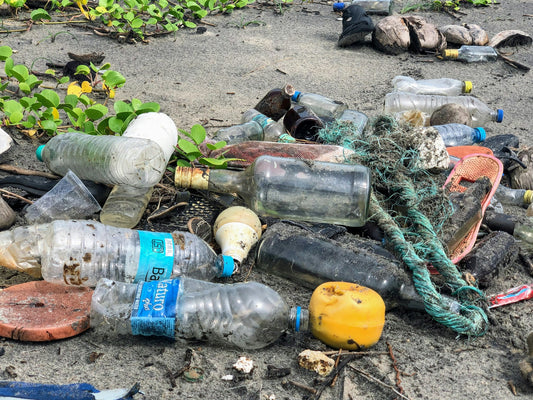Share
The world has been consuming more plastics than ever before, and this has led to increased pollution of our waters.
The impacts of this plastic pollution, especially on marine life, are well known, but perhaps nothing is more devastating than the impact on sea turtles.
In this article, we will learn about the threat of plastic pollution to turtles, how plastic affects sea turtles, and what can be done to tackle this issue.
Effects of Plastics on Sea Turtles

Recent studies indicate that more than 52% of sea turtles have consumed plastics, and this figure is expected to rise. Sadly, the impact of plastic pollution on sea turtles is usually deadly.
It is to be noted that more than 270 species of marine animals, including turtles, are killed by plastics either by swallowing them or being trapped in plastic waste annually.
Scientists estimate that at least 1,000 sea turtles die each year due to entanglement in plastic—that's an average of more than one turtle every nine hours.
One of the major types of plastic waste that sea turtles ingest is plastic bags, which resemble jellyfish. These bags block the turtle’s digestive system, leading to malnutrition and possibly death.
How Does Plastic Affects Sea Turtles?
1. Entanglement:
The most observable impact of plastics on sea turtles is ingestion or entanglement.
Lost or discarded fishing gear, abandoned nets, and other related items become deathtraps for these animals when they move around their aquatic environments.
These animals cannot free themselves and get entangled, which makes them get injured or suffocate to death.
Marine litter has been shown to entangle sea turtles, with research revealing that 14% of turtles had been trapped in litter. This shows just how widespread and destructive this problem is.
2. Ingestion:
Another major threat that poses a risk of death in sea turtles is the consumption of plastics.
Turtles mistake plastic for prey; they consume everything from plastic bags to fragments of bottles and packaging.
These substances cannot be digested and contain dangerous chemicals. They can swell up to block the intestines, leading to internal injuries, lack of nutrients in the body, and death.
Ingestion of plastics is one of the biggest dangers facing sea turtles; research indicates that 86% of turtles that underwent necropsy had consumed plastics and microplastics, which may result in blockage, poor nutrition, slower growth, and death.
3. Habitat Degradation:
While plastic pollution is known to negatively affect sea turtles, it also threatens their environments in other ways. It thus contributes to the various obstacles the animals have to deal with.
Plastic pollution is a major threat to sea turtles because it affects their primary nesting grounds, known as the coastal zones.
There are places where female turtles deposit their eggs. With large amounts of plastic in coastal zones, the necessary behaviors for reproduction are affected.
What Can Be Done To Tackle This Issue?

When it comes to the effects of plastic pollution on sea turtles and marine life, we need to act now and find solutions to this problem.
Reducing our dependence on single-use plastics is one of the most efficient strategies to minimize the use of plastics.
Reusable products such as water bottles, shopping bags, and containers can reduce the flow of plastic waste.
Furthermore, promoting companies that use less or no plastics and encouraging plastic-free causes can also play a key role in saving the population of sea turtles.
Governments are responsible for managing plastic pollution through policies and laws. Some measures include banning or limiting single-use plastics like plastic bags, straws, and cutlery, which will reduce the use of plastics.
There is hope if we all work together! In 2018 a team of voluneers cleaned up Mumbai's beaches to se the return of thousands of sea turtles for hatching. What a great example how us humans can make a real difference in this world if they work for a united cause.
What else can we do to protect these beautiful animals? Feel free to leave a comment below.
We hope you enjoyed this article. If you want to read more like this, make sure to check out our Blog and follow us on Instagram. If you are interested in truly sustainable products, check out our Shop.









2 comments
Thanks so much for your feedback. It’s feedback like this that motivate us every day to keep going :-)
Thank you so much for this website I did not know the huge effect of plastic in the world.